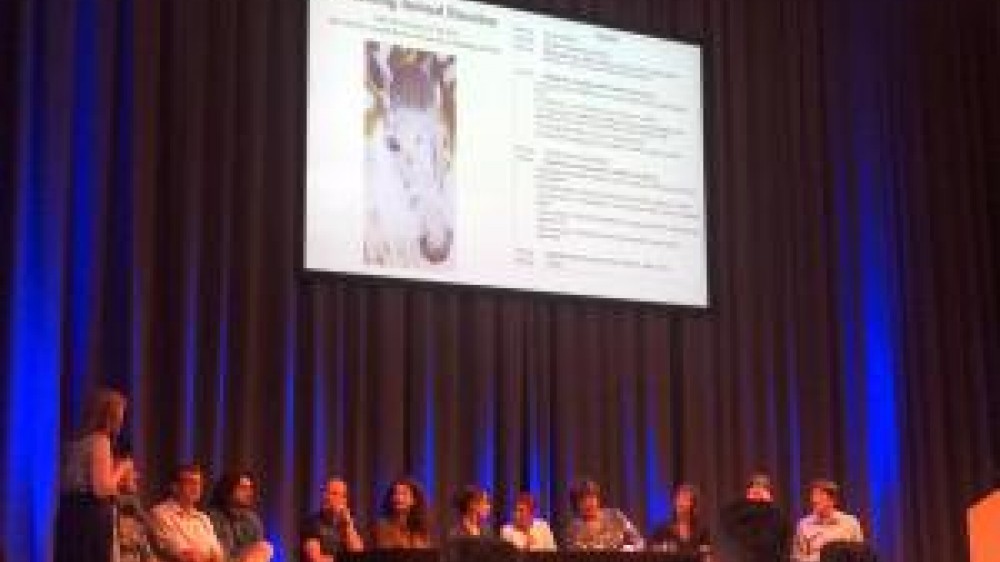Measuring animal emotion workshop - impressions and Storify

The emotional state of an animal is a key indicator of its welfare and many researchers now use a variety of approaches to better understand the wellbeing of animals, and the impact that good welfare can have on research.
The NC3Rs recently sponsored a workshop focusing on measuring animal emotions, organised by NC3Rs grantholders Professor Mike Mendl and Dr Liz Paul, which aimed to share and consolidate knowledge in this field. The Edinburgh-based workshop attracted an international audience to discuss methods and tools for measuring animal emotion, and the validity, strengths and weaknesses of different approaches.
Take a look at our Wakelet below to see what happened during the event.
Dr Liz Paul and Professor Mike Mendl, University of Bristol, organised a ‘Measuring Animal Emotions’ workshop in Edinburgh on 12 July. Dr Sam Jones summarises the event.
The workshop, funded by the NC3Rs, attracted over 300 participants from around the globe. The aim of the workshop was to provide a concise overview of methods used to measure animal emotions in applied ethology and animal welfare research.
Dr Ádám Miklósi (Eötvös University, Hungary) gave a plenary talk on his work on cognition in dogs, the aspects of emotion that can be measured in animals, and what this means for animal emotion research.
Dr Miklósi explained how studying the behaviour of animals can provide an insight into their emotions, and the use of non-invasive techniques such as functional magnetic resonance imaging to discover the neurobiology behind emotional states.
Following this, ten invited speakers gave a broad range of interesting and informative presentations discussing widely used or long established measures. Professor Georgia Mason, University of Guelph, talked about the use of glucocorticoids to measure negative emotional states and their potential to be used to assess refinements to aversive procedures.
Dr Suzanne Held, University of Bristol, provided an overview of using play as a measure of positive emotion in welfare assessment.
Dr Becca Franks, University of British Columbia, described the promise and pitfalls of assessing emotional state using curiosity and exploration tests.
And Dr Carole Fureix, University of Bristol, described methods using anhedonia (see tweet below) to measure negative affective states, presenting evidence in rodents, and the potential for adaption to larger, non-laboratory species.
Other talks included new approaches to measuring animal emotions such as vocalisations in goats (Luigi Baciadonna, Queen Mary University of London), the use of telemetric equipment in pigs to assess autonomic activity (Annika Krause, Leibniz Institute for Farm Animal Biology), the use of near-infrared spectroscopy to measure brain activity in sheep (Dr Lorenz Gygax, The Swiss Federal Food Safety and Veterinary Office) and the role of ‘Qualitative Behavioural Assessment’ in assessing emotion in animals (Dr Francoise Wemelsfelder, Scotland’s Rural College).
NC3Rs funded scientists Dr Matt Leach (Newcastle University) and Professor Mike Mendl (University of Bristol) also provided an overview of their research. Dr Leach discussed the evidence linking facial expressions with emotions. He spoke about development of the Grimace Scales and their use for pain assessment in a range of animal species.
And Professor Mendl discussed the strengths and weakness of the judgement bias approach to assess animal affect and a meta-analysis that is underway.
After a wide range of stimulating talks the workshop ended with a panel discussion session, prompted by thought-provoking questions from the audience.
The workshop brought together inspiring researchers from a range of disciplines showcasing the many different approaches to measuring animal emotions. The meeting could potentially lead to new collaborations, refinement of current techniques, and the development of new and exciting research to help understand animal emotions.
